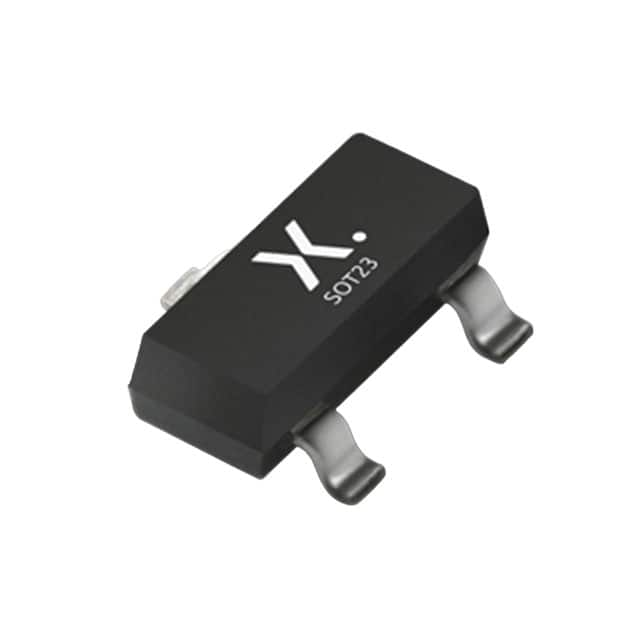Siehe Spezifikationen für Produktdetails.

BAV70,215
Product Overview
Category
The BAV70,215 is a dual common cathode switching diode.
Use
It is commonly used in high-speed switching applications.
Characteristics
- Fast switching speed
- Low leakage current
- Small package size
Package
The BAV70,215 is available in a SOT-23 package.
Essence
This diode is essential for electronic circuits requiring fast and efficient switching.
Packaging/Quantity
It is typically packaged in reels with quantities varying based on manufacturer specifications.
Specifications
- Maximum Reverse Voltage: 70V
- Forward Continuous Current: 200mA
- Power Dissipation: 225mW
- Operating Temperature Range: -65°C to +150°C
Detailed Pin Configuration
The BAV70,215 has three pins: 1. Common Cathode 2. Anode of Diode 1 3. Anode of Diode 2
Functional Features
- High-speed switching capability
- Low forward voltage drop
- Suitable for high-frequency applications
Advantages
- Small package size
- Low leakage current
- Fast switching speed
Disadvantages
- Limited maximum reverse voltage
- Relatively low forward continuous current
Working Principles
The BAV70,215 operates based on the principles of semiconductor junctions, allowing for efficient and rapid switching of electrical signals.
Detailed Application Field Plans
The BAV70,215 is widely used in: - Signal demodulation circuits - High-speed switching circuits - Voltage clamping circuits
Detailed and Complete Alternative Models
Some alternative models to the BAV70,215 include: - 1N4148 - 1N914 - BAT54S
In conclusion, the BAV70,215 is a crucial component in electronic circuits requiring fast and efficient switching capabilities. Its small package size and low leakage current make it suitable for various high-speed applications, despite its limitations in maximum reverse voltage and forward continuous current.
Word count: 271
Listen Sie 10 häufige Fragen und Antworten im Zusammenhang mit der Anwendung von BAV70,215 in technischen Lösungen auf
What is BAV70,215?
- BAV70,215 is a dual common cathode switching diode array commonly used in electronic circuits for signal processing and switching applications.
What are the typical applications of BAV70,215?
- BAV70,215 is commonly used in high-speed switching applications, such as in radio frequency (RF) mixers, low-capacitance clamping diodes, and general purpose switching.
What are the electrical characteristics of BAV70,215?
- The BAV70,215 has a maximum repetitive peak reverse voltage of 70V, a forward continuous current of 200mA, and a power dissipation of 225mW.
How does BAV70,215 differ from other diodes?
- BAV70,215 is a dual diode array, meaning it contains two diodes in a single package, making it suitable for space-constrained applications.
Can BAV70,215 be used in rectification applications?
- Yes, BAV70,215 can be used for low-power rectification applications due to its fast switching characteristics and low forward voltage drop.
What are the temperature considerations for BAV70,215?
- BAV70,215 has an operating temperature range of -65°C to +150°C, making it suitable for a wide range of environmental conditions.
Are there any specific layout considerations when using BAV70,215?
- It is important to minimize the length of the traces connecting BAV70,215 to reduce parasitic inductance and maintain signal integrity.
Can BAV70,215 be used in high-frequency applications?
- Yes, BAV70,215 is suitable for high-frequency applications due to its low capacitance and fast switching speed.
What are the packaging options available for BAV70,215?
- BAV70,215 is commonly available in SOT-23 and SOT-323 packages, which are compact and suitable for surface mount applications.
Are there any potential failure modes to consider when using BAV70,215?
- Excessive current or voltage spikes can lead to failure, so proper current and voltage limiting measures should be implemented in the circuit design.

